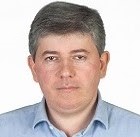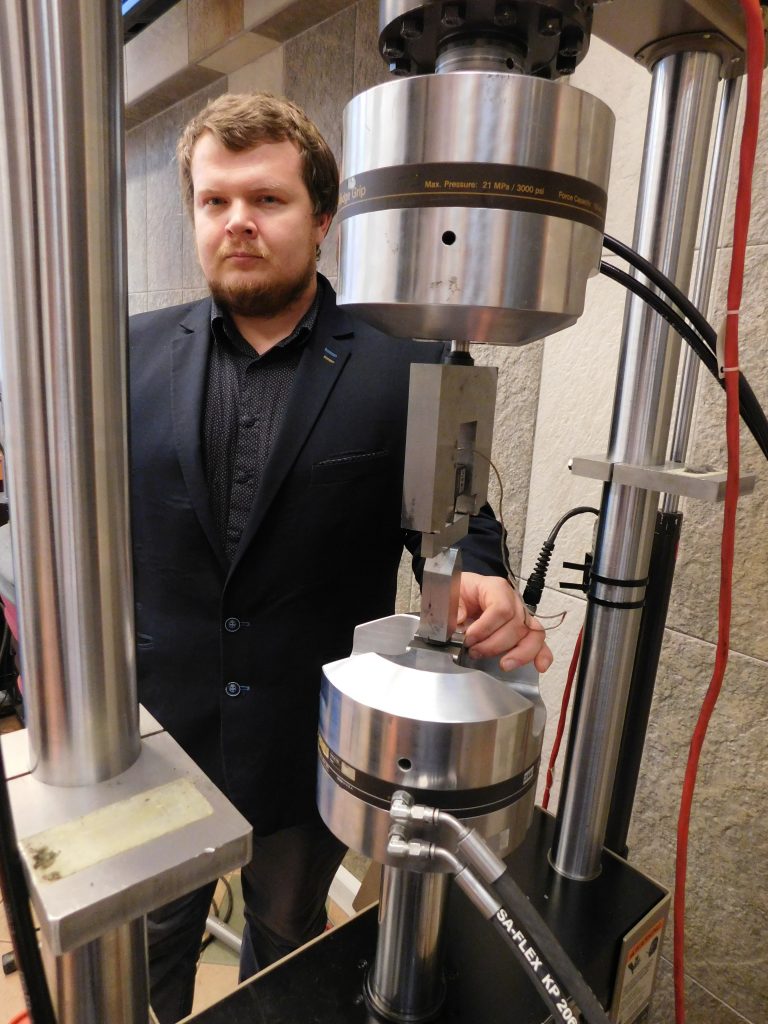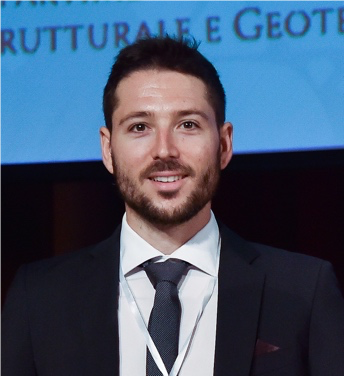
Rui Calçada (Virtual Conference)
Dr. Rui Calçada Current Position: Full Professor of the Civil Engineering Department of Faculty Engineering of the University of Porto (FE/UP), Head of the Civil Engineering Department from FE/UP. Coordinator of PhD programme – iRail – Innovation in Railway Systems and Technologies. Academic background: Civil Engineer Degree from FE/UP (1992); Master Degree in Civil Engineering Structures from FE/UP (1995); PhD Degree from University of Porto in Civil Engineering field (2003). Researcher responsible for 12 research projects and team member of 10 research projects related to the railway lines; Supervisor of 16 doctoral theses; author of more than 300 technical and scientific publications. Main research interest/expertise: advanced models for train-infrastructure dynamic interaction; wayside (track, bridges, transition zones) and on-board condition monitoring systems; advanced algorithms for condition monitoring systems.

Shun-Peng Zhu (Virtual Conference)
Dr. Shun-Peng Zhu, Professor in Mechanical Engineering at University of Electronic Science and Technology of China (UESTC), China. He received his Ph.D. degree in Mechanical Engineering from UESTC in 2011, and was honoured as PIF Fellow of Politecnico di Milano, Italy from 2016 to 2018 and research associate at University of Maryland, United States in 2010. His research which has been published in scholarly journals and edited volumes, over 100 peer-reviewed book chapters, journals and proceedings papers, explores the aspects: fatigue reliability design; probabilistic Physics of Failure modeling; multi-physics damage modeling and life prediction for engineering components/materials. He received the Award of Merit of ESIS-TC12 in 2019, Polimi International Fellowship in 2016, 2nd prize of the National Defense Science and Technology Progress Award of Ministry of Industry and Information Technology of China in 2014, Hiwin Doctoral Dissertation Award in 2012, Best Paper Awards of several international conferences and Elsevier Outstanding Reviewer Awards. He is Elsevier Most Cited Chinese Researchers in the field of Safety, Risk, Reliability and Quality since 2018, and serves as guest editor, editorial board member of several international journals and Springer book series.
Title: Notch and size effects in metal fatigue: recent advances
Notch features commonly exist in engineering components, which generally act as stress raisers and thus present significant influences on the component strength and life, and are more remarkable under complex loading paths. Also, structural components with different scales normally show different fatigue behaviors. Accordingly, numerous theories and approaches have been developed to address both notch and size effects in metal fatigue as well as damage modelling and life predictions, which aim to provide theoretical support for structural optimal design and integrity evaluation. This speech recalls recent developments and achievements in notch fatigue modelling and analysis of metals under size effects. In particular, recent commonly used methods for fatigue evaluation of metallic notched parts under size effect are summarized and elaborated, including local stress-strain approaches, and critical distance theories as well as weighting control parameters-based approaches, which intend to provide a reference for further research on notch fatigue analysis and promote the integration and/or development among different approaches for practice.

Grzegorz Lesiuk (Virtual Conference)
He is employed at the Wrocław University of Technology (Faculty of Mechanical Engineering) since 2009. He received his PhD in technical sciences (mechanics) in 2013 and habilitation (in mechanical engineering) in 2020. His scientific activities are related to mechanics, fracture mechanics and fatigue of materials and structures, as well as new materials and modelling their durability under cyclic and static loads. He has over 90 scientific papers published in national and international scientific and technical journals and over 70 conference papers and 1 patent in this field. He is a Polish Society of Theoretical and Applied Mechanics and ESIS (European Structural Integrity Society) member. As part of his teaching activities, he gives lectures and exercises in courses on mechanics, the strength of materials, fracture mechanics, lightweight structures, dimensional analysis, fatigue and fracture of materials and structures. He is a co-author of an academic textbook on mechanics and a co-author of a monograph (Springer) devoted to the problems of degradation of materials and structures. He is also the principal supervisor of two doctoral dissertations in Poland, assistant supervisor of four doctoral dissertations in Poland and co-promoter of four foreign doctoral dissertations (Portugal, Brazil). For years he has been intensively cooperating with foreign centres in Europe (mainly in Porto, Coimbra – Portugal, Oviedo – Spain, Milano, Cassino, Bologna – Italy, Brno, Prague – Czech Republic, Lviv, Kiev – Ukraine, Chemnitz, Kaiserslautern – Germany, Trondheim-Norway, Nove Mesto – Slovenia) and outside Europe (Brazil – Sao Paulo, Minas Gerais, China – Chengdu, USA – Michigan, Canada – Waterloo, Zabol-Iran, Boumerdes-Algeria). He is co-organizer of many international and national scientific events such as XXICMFM (International Colloquium Mechanical Fatigue of Metals), XVIII KKMP (National Conference on Fracture Mechanics), 1st VCMF (Virtual Conference on Fatigue of Metals), IX Symposium – Laminated Structures and creator of a new initiative in the form of Polish-Czech-German-Ukrainian winter school of fracture mechanics and fatigue. He was repeatedly awarded for his scientific activities: Admission as a member of the Academy of Young Scientists and Artists operating at the President of the City of Wroclaw – nomination received from the President of the City of Wroclaw (2018), Rector’s Award of Wroclaw University of Technology (2018, 2020), International ESIS Award – TC12 (Merit Award) 2019 and 2 international TOP 1% Reviewers (Publons&Web of Science) awards – 2019, Lierati Award (2019) – Emerald Journals Group.
Title: Long-term operation of bridge steel and fatigue crack growth modelling based on energy approach
Fatigue and fracture are the two main (more than 70% of all failures) phenomena responsible for the structural damage in steel structures subjected to cyclic loads. The main difficulty in describing of the fatigue crack growth rate in mathematical terms is the incomplete understanding the nature of this process in various material groups under different loading conditions (constant amplitude, random loads, single and multi-axial loads, etc.), One of the reasons for this inadequacy is the effect of mean stress expressed by e.g. by the R-stress ratio. The main goal of this lecture is to define new Crack Driving Force (CDF) as an invariant quantity in fatigue crack growth process. During the lecture, it will be proposed a method for description of fatigue crack growth regarding mixed-mode loading condition (I+II, I+III) in the range of elastic-plastic fracture mechanics based on new strain energy density parameter S* (Fig.1.) expressed as a combination of J integral values. The fracture properties and fatigue crack growth results for 19th-century puddle iron are presented and compared with typical Kinetic Fatigue Fracture Diagram (KFFD) constructing methods. The presented results for fatigue crack growth rate description under mode I using Kapplied approach and Keffective approach differs significantly using variable mean stress effect – R-ratio (0.05; 0.7). As it was demonstrated, the hysteresis loop analyses allow to obtain the estimated crack closure level. From the engineering point of view, there is a strong need for generalization of the KFFDs description using mean stress robust parameter involving local crack tip behavior for old puddle iron.

Nicholas Fantuzzi (Virtual Conference)
Dr. Nicholas Fantuzzi is Senior Assistant Professor at the University of Bologna, Italy. He received his Ph.D. degree in Structural Engineering and Hydraulics at the University of Bologna in 2013. Author of more than 100 international peer reviewed journal papers, 9 books (in Italian and English), 3 book chapters and more than 80 abstracts in national and international conferences, exploring the aspects: Mechanics of solids and structures, fracture mechanics, implementation of numerical methods for the design of structures, application of composite materials in offshore engineering, design and strengthening of offshore components with numerical simulations, finite element method, differential quadrature method and mesh-free element methods. He received three international awards: “ICCS17 Ian Marshall’s Award for Best Student Paper” in 2013; “Best Student Paper Award – MIMS16” in 2016; “ICCM Young Investigator Award” in 2018. Invited Keynote speakers at 5 international conferences, he was the Guest Editor of 8 Special Issues in International peer-review journals and Section Editor-in-Chief of “Mathematical and Computational Applications”, MDPI Publishing.
Title: Some modeling aspects for retrofitting and decommissioning activities in offshore environment
Offshore structures are known to be used for extracting natural gas and oil from the sea bed. However, when the underground source finishes, these structures should be moved to another location or removed if they have reached their design life. Removal operations go under the name of decommissioning which is a multidisciplinary process by which a Company decides on how to shut down the field activities at the end of the structure life: plugging and abandoning the well(s), making the equipment/installation safe, remove some or all the facilities and restoring the area. Decommissioning will occur at different stages of asset lifecycle and has wide relevance in terms of reputation, so it needs to be managed properly as a dedicated business process. Nevertheless, another solution might be considered: change the future working life of these platforms by involving renewable energy and transforming them, for instance, into offshore wind towers. This activity involves retrofitting activities in order to strengthen the original structural elements in order to carry new loads. All the aforementioned operations involve structural modeling which can be carried out at global and local scales. Such degrees of complexity might be time consuming for Companies that in general have limited time to make decisions in the initial phases of these operations and want to save money. Therefore, in this talk some modeling aspects for retrofitting and decommissioning activities will be discussed.
